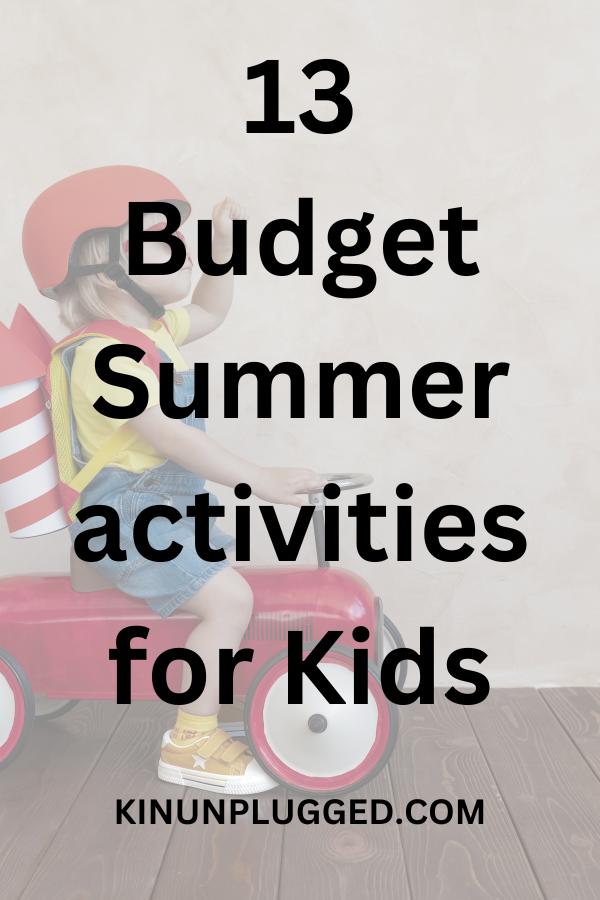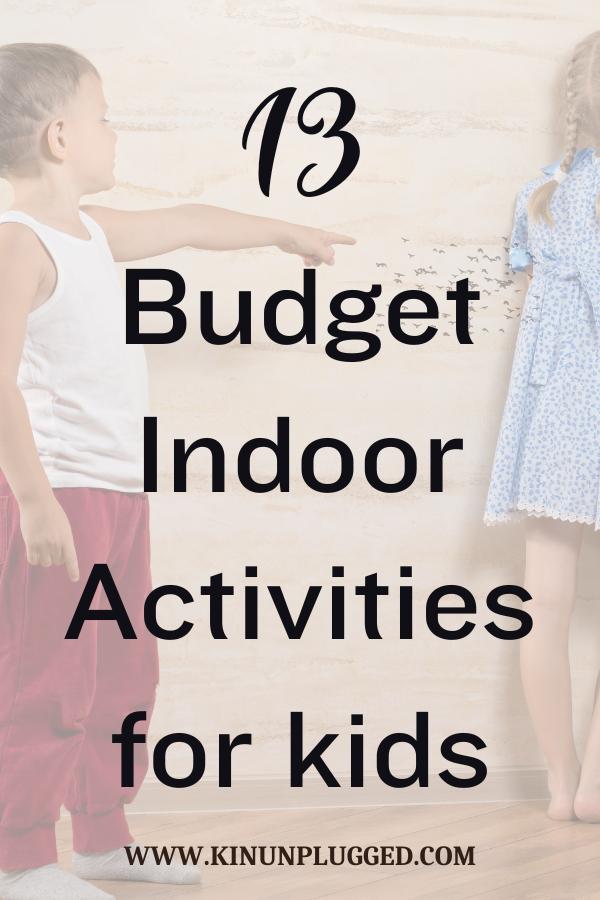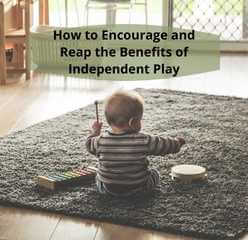Budget-friendly summer activities for kids at home are essential for families who are seeking fun experiences without breaking the bank! These activities not only provide children with enjoyable experiences but they also encourage creativity, social interaction and physical exercise. By having a line up of affordable options, parents can keep their children entertained and active throughout the summer months, creating lasting memories without straining their finances.
Budget-friendly summer activities for kids at home play a crucial role in enhancing the overall summer experience for families.
READ: 90+ Bucket List Summer Activities for Adults
In this article, you’re going to find a variety of fun and engaging ideas that work for the home setting.

Fun summer activities for kids at home
Indoor activities
- DIY science experiments
Setting up DIY science experiments is an excellent way to pique children’s curiosity and encourage their love for learning during the summer. Choose experiments that are age-appropriate and safe and use household items to cut costs. A simple but fascinating experiment is making a baking soda and vinegar volcano.
All you need is baking soda, vinegar, dish soap, food coloring (for effect) and a container to act as the volcano. Begin by helping your kids construct the volcano using clay or a mound of dirt from outside. Place the container at the volcano’s center, add a few tablespoons of baking soda, some dish soap and food coloring. Then pour in the vinegar and watch the eruption!
This activity teaches children about chemical reactions in a tangible way that they’ll remember.
Why it’s a good idea
DIY science experiments are valuable because they make learning interactive and fun. They give kids a sense of achievement and can be a bonding activity for the whole family. Also, doing these experiments at home allows children to learn at their own pace and encourages them to ask questions and explore concepts more deeply.
By using everyday items, children also learn to see the world around them as a resource for learning and discovery. That creates a mindset of innovation and problem-solving.
Another plus is that doing science experiments over the summer helps prevent the “summer slide,” where children lose some of the academic gains they made during the school year. By incorporating educational summer activities for kids at home in a casual, fun environment, children continue to develop their critical thinking and analytical skills. It’s a hands-on approach to learning that creates a love for science and education that can last a lifetime, laying the groundwork for future academic and career interests in the STEM fields.
2. Indoor picnic
An indoor picnic is a fantastic way to bring the excitement of eating outdoors inside, which is especially helpful on days when the weather doesn’t cooperate. Find a spacious area in your home, like the living room floor, and spread out a picnic blanket. Invite the kids to help prepare simple, picnic-friendly foods like sandwiches, fruit slices and cookies.
Encourage them to get creative with food presentation or to come up with their own picnic menu. Once the food is ready, gather all the picnic essentials like plates, cups and napkins and set them on your blanket. You can make the atmosphere even better by decorating with items like paper lanterns or playing nature sounds in the background.
Why it’s a good idea
An indoor picnic is a good idea because it transforms a regular mealtime into an adventure, making it an exciting activity for kids. It’s a budget-friendly way to create a special family moment without needing to travel or buy expensive entertainment. It promotes family bonding and encourages children to participate in meal preparation, teaching them valuable life skills.
Moreover, it’s a flexible activity that can be themed around different cuisines or fictional stories – excellent for sparking children’s imagination and creativity.
Indoor picnics can be a stress-free alternative for parents because they require minimal setup and cleanup. It’s also a good way to break the monotony of routine, giving children something to look forward to. By involving kids in the planning and execution, they learn about organization and responsibility in a fun, relaxed setting.

3. Movie marathon with homemade snacks
Organizing a movie marathon with homemade snacks is an enjoyable and budget-friendly way to spend a summer day. Start by selecting a series of movies or films that are appropriate for your children’s ages and interests. Themes can range from superheroes to animated classics, allowing for a tailored viewing experience.
Prior to the movie day, plan and prepare a variety of simple, homemade snacks with your kids. Popcorn is a must-have; you can make it more exciting by adding different flavors like cheese, caramel, or chocolate. Other easy-to-make snacks include fruit kabobs, homemade pizza bites, or veggie chips.
Set up a comfortable viewing area with pillows, blankets, and dim lighting to create a cozy atmosphere akin to a movie theater.
Why it’s a good idea
This activity is beneficial because it encourages family togetherness through shared interests and provides an affordable alternative to going out to the movies. Making snacks together fosters teamwork and teaches children basic cooking skills, emphasizing the importance of homemade food over store-bought options. Also, preparing snacks can serve as a creative outlet, allowing kids to experiment with flavors and presentation, thereby enhancing their culinary creativity and appreciation for food.
A movie marathon with homemade snacks offers a fantastic opportunity for relaxation and escape from the summer heat. It creates a platform for discussions about the movies watched, encouraging critical thinking and personal expression. This can lead to a deeper understanding of storytelling, character development and cinematic techniques, subtly educational aspects hidden within the fun.
Doing such a laid-back yet interactive activity can help strengthen bonds, creating memorable experiences that highlight the joy of simple pleasures and the value of spending quality time together as a family.
RELATED: 16 fun indoor activities for 2 year olds
Backyard activities
1. Backyard camping
Organizing a backyard camping adventure is a wonderful way to bring the excitement of camping to the convenience of your home. Begin by setting up a tent in your backyard, complete with sleeping bags, flashlights and maybe even a small campfire setup or portable grill for roasting marshmallows. The evening can be filled with storytelling, stargazing and a night-time game of hide and seek.
Why it’s a good idea
Backyard camping is good for sparking kids’ interest in the outdoors and adventure in a safe and controlled environment. It allows children to experience a sense of independence and adventure while still under the watchful eyes of their parents. Preparing the campsite and planning the activities together can also teach them about teamwork and planning.
It’s a perfect escape from the digital world.
2. DIY water play
Setting up a DIY water play day involves nothing more than your garden hose, a few sprinklers and perhaps some inflatable pools or water balloons. The key is to create various stations of water fun, from sprinkler dashes to water balloon tosses, making sure there are activities suited to all ages involved. Incorporate some slip ‘n’ slides using plastic tarps for added excitement.
Why it’s a good idea
DIY water play is an excellent activity for children during the summer because it allows them to cool off while engaging in physical activity. It promotes imaginative play as kids invent their games and challenges, fostering creativity and problem-solving skills. Also, water play is a sensory experience beneficial for young children’s development, supporting their motor skills, coordination and understanding of cause and effect.

3. Nature scavenger hunt
A nature scavenger hunt involves creating a list of natural items for kids to find in your yard or a local park. Items on the list can vary from specific leaves and flowers to various insects or rocks. Equip each child with a bag or container for their finds and a checklist, and set them off on their adventure.
Maybe you can also get small prizes for everyone at the end to celebrate their discoveries.
Why it’s a good idea
A nature scavenger hunt encourages children to observe and interact with their environment closely. It’s an engaging way to teach kids about the biodiversity around them, fostering a sense of wonder and respect for nature. This activity also enhances observational skills, attention to detail and can even incorporate elements of science education as they learn about the items they find. It’s a dynamic way to combine physical activity with learning, perfect for curious minds.
4. Sidewalk chalk art
Creating sidewalk chalk art is as simple as giving kids a box of chalk and setting them loose on a driveway or sidewalk. Encourage them to draw their favorite animals, characters, or even create an outdoor chalk art gallery. For a twist, families can draw out game boards for classics like hopscotch or four-square.
Why it’s a good idea
Sidewalk chalk art is a vibrant expression of creativity, allowing kids to display their artwork for the whole neighborhood. It’s a great way for children to engage in creative play, developing their artistic skills and imagination. This activity can be both a solo and a collaborative effort, promoting social skills and teamwork as kids work together to create large masterpieces.
Plus, it’s an excellent way for kids to be active outdoors, enjoying the fresh air.
5. Gardening projects
Starting a gardening project with kids can range from planting a few flower seeds to managing a small vegetable garden. Help them select plants that are easy to care for and quick to grow, providing immediate satisfaction from seeing their efforts flourish. Gardening tasks like watering, weeding and harvesting can be shared among family members.
Why it’s a good idea
Gardening projects are not only relaxing but also educational. They teach children about the life cycle of plants and the responsibility of caring for living things. Gardening can instill a sense of pride and accomplishment in kids as they watch their plants grow and thrive.
It’s also an opportunity to discuss the importance of sustainable practices and healthy eating, especially if you grow fruits and vegetables. It’s a hands-on activity that encourages patience, curiosity, and can even improve mental and physical well-being.

Educational activities
- DIY learning stations
Setting up DIY learning stations around your home is a creative and engaging way to keep kids learning over the summer. Each station can focus on a different subject or activity, like a reading nook, a science experiment table, or an art corner filled with supplies for crafting. By rotating the kids through each station, they can explore a variety of topics and activities at their own pace.
Why it’s a good idea
DIY learning stations are a cornerstone of budget summer activities for kids at home: they’re a versatile approach to education without the need for expensive materials or outings. They not only cater to children’s diverse interests but also encourage self-directed learning and creativity. They’re an excellent way to keep minds active and engaged, making learning fun and accessible throughout the summer.
2. Virtual museum tours
Virtual museum tours provide an extraordinary opportunity for children to explore world-class museums, galleries and historical sites from the comfort of their home. By navigating through virtual tours available on museum websites or through educational platforms, kids can witness the wonders of ancient civilizations, marvel at artistic masterpieces and delve into the depths of natural history.
Why it’s a good idea
As one of the key summer activities for kids at home, virtual museum tours open up a world of learning and exploration that transcends geographical boundaries. They offer an affordable way to provide children with a rich cultural education, exposing them to diverse perspectives and histories. This activity fosters curiosity, enhances cultural literacy, and can inspire a lifelong love for art, history and science.
3. Nature journaling
Nature journaling involves taking a notebook outdoors and encouraging kids to write or draw their observations of the natural world. Whether it’s sketching a flower in the backyard, noting the behavior of birds at a park or chronicling the changes in the weather, nature journaling is a reflective practice that sharpens observational skills and deepens environmental awareness.
Why it’s a good idea
Nature journaling is an effective way to blend artistic expression with scientific inquiry. It teaches children to notice patterns and beauty in the natural world, promoting a sense of connection and stewardship towards the environment. This activity enhances writing and drawing skills, encourages mindfulness and patience and is a tangible record of learning and growth over time.
4. Baking and cooking together
Baking and cooking together involve bringing children into the kitchen to help prepare meals or treats. From measuring ingredients and following recipes to the chemistry of baking and the art of presentation, cooking is a multifaceted activity that can be tailored to suit any age.
Why it’s a good idea
This activity is more than just a way to prepare food; it’s a hands-on learning experience that teaches math, science and reading skills. It also creates a sense of responsibility and teamwork as children contribute to family meals. Baking and cooking together can strengthen familial bonds, encourage healthy eating habits and instill confidence in kids because they learn valuable life skills.
5. Language and cultural exploration
Language and cultural exploration can start with choosing a country or culture to learn about and then getting into its language, traditions, cuisine, music and more. Activities can range from online language lessons and cooking traditional dishes to watching films or listening to music from that culture.
Why it’s a good idea
Language and cultural exploration broadens children’s horizons. It encourages an appreciation for diversity and global awareness. It’s a dynamic approach to learning that can spark interest in world travel, international cuisines and multilingualism. By exploring different cultures from home, children develop empathy and curiosity, skills that are crucial in our interconnected world.
In conclusion…
I’d love for you to try out these ideas this summer! Also feel free to share some more ideas and your own experiences with me in the comments.
Subscribe to my newsletter by entering your email below and become part of the Kin Unplugged family, and access more family-friendly tips and activities





